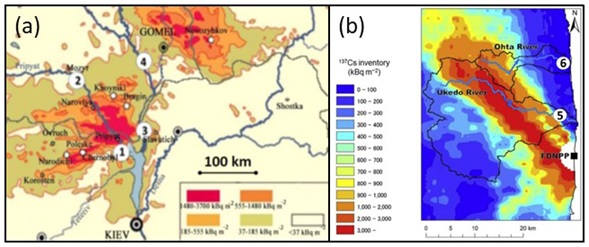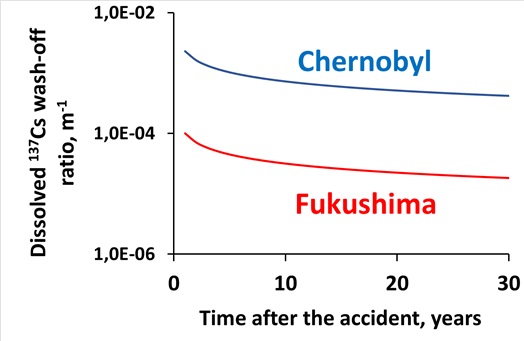Mid- to long-term radiocesium wash-off from contaminated catchments at Chernobyl and Fukushima
Project Professor Alexei Konoplev
Research Overview
The researchers of the Institute of Environmental Radioactivity (IER) at Fukushima University and their Ukrainian colleagues from Hydrometeorological Institute (Kiev) as well as Belarusian scientists from Ministry of Health and International Sakharov Environmental Institute of Belarusian University (Minsk) have been conducting the joint studies of the mid-and long-term radiocesium wash-off from contaminated catchments at Chernobyl and its comparison with Fukushima contaminated areas. This research is going within the framework of Japan-Ukraine SATREPS Chernobyl project (funded by JST and JICA, JPMJSA1603) and JSPS KAKENHI Project 18H03389.
In the recent study, IER Project Professor Alexei Konoplev and his Ukrainian and Belarusian partners have developed and proposed semi-empirical diffusional model of radionuclide wash-off from contaminated catchments and tested the model using available datasets for rivers located both in Chernobyl and Fukushima contaminated areas (Fig. 1).

Based on the model calculations the differences in the wash-off characteristics for these two regions are explained and their long-term trends predicted (Fig. 2). The quantitative characteristic of dissolved radiocesium wash-off – wash-off ratio[*1] for Fukushima catchments is at least an order of magnitude lower than that for Chernobyl, mainly due to difference in the radiocesium affinity to particulate matter[*2].

The Significance of the Study
The proposed semi-empirical diffusional model for radionuclide wash-off satisfactorily describes the temporal trends in the radiocesium wash-off characteristics for both the Chernobyl and Fukushima cases. Besides the scientific interest, obtained results may have a practical value – suggested model can be used as a tool for predicting 137Cs wash-off after a nuclear accident.
Key Terms
[*1] Dissolved radiocesium wash-off ratio is calculated by dividing the concentration of dissolved radiocesium (Bq m-3) by the average amount of radiocesium deposited in the catchment (Bq m-2).
[*2] Particulate matter is a solid or liquid particle of micrometer size. In this sentence, it refers to fine soil particles or organic matters.
Publication
This study was posted online in ELSEVIER Journal “Water Research” on October 12, 2020, and will be published in Volume 188, January 2021.
| Journal | Water Research |
|---|---|
| Title | Mid- to long-term radiocesium wash-off from contaminated catchments at Chernobyl and Fukushima |
| URL | https://doi.org/10.1016/j.watres.2020.116514 |
| Authors | Аlexei Konoplev1, Volodymyr Kanivets2, Оlga Zhukova3, Мaria Germenchuk4, Hrigoryi Derkach2 1Institute of Environmental Radioactivity 2Ukrainian Hydrometeorological Institute 3Scientific-Practical Center of Hygiene, Ministry of Health of the Republic Belarus 4International Sakharov Environmental Institute of Belarusian State University |
